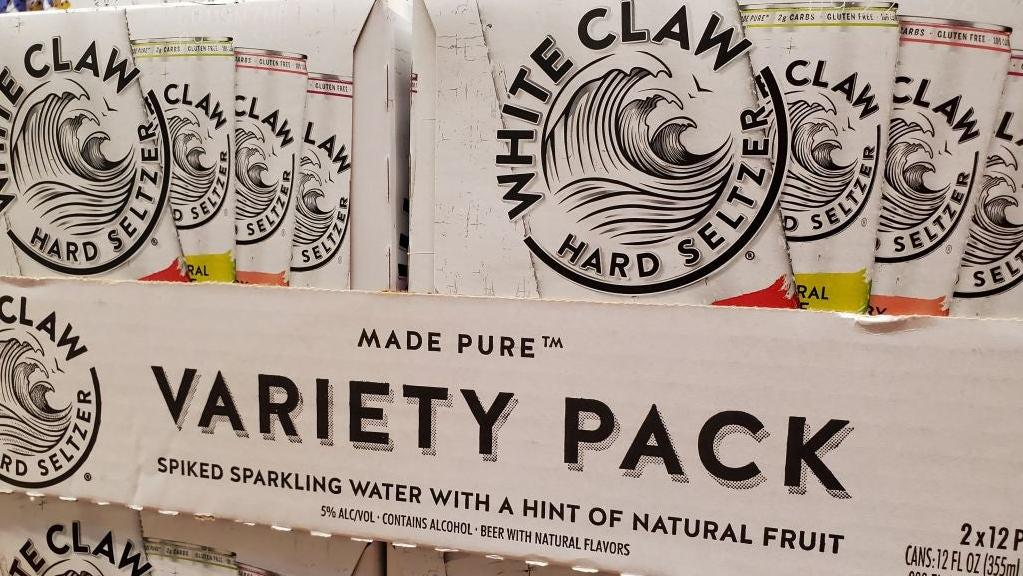The New York Times Confirms Just How Much We Love Hard Seltzer (And It's A Lot)
Quick, name a product that has octupled its sales within two years. If you said "hard seltzer," you're right—and you likely know that because for the past three summers in a row, there have been countless news stories about the meteoric rise of hard seltzer. This week, the New York Times has another one for us. Yes, seltzer is booming! People love White Claw! We know this! Yet each time we revisit the topic, the sales figures have only inflated more and more: in 2018, the Times notes, hard seltzer was a $500 million industry. In 2020, it was worth $4 billion. And it's only getting bigger.
What on earth happened to make hard seltzer such a powerhouse? And why is it taking off now? Marie Wright, a professional flavorist who has done lots of work with hard seltzers, explained it this way in our interview last summer:
Zoomers and Millennials are not really into hard alcohol. They love cocktails, but not hard alcohol. There's been a trend toward something more refreshing, lower calorie, and then, boom—once a trend starts... White Claw. What a name! What a brand! It became so trendy, and these particular generations may not drink anything else. Beer consumption had started to drop before then. Seltzer is a very refreshing, low-calorie, clean-tasting beverage that suits almost any occasion. And a lot of beverages, when they emerge, become gender-specific. But this isn't. It's perfectly cool if you're a guy to drink it as it is for a woman to drink it.
The lack of "gender specificity" in drinks like White Claw is something that the Times notes in its own reporting, explaining that the industry has "neatly sidestepped the gender issue that plagued earlier, lighter alcoholic alternatives like Zima, which became popular with women but struggled to be adopted by men." By marketing seltzers as a light, refreshing alternative to beer, with the flavor of a mixed drink (though none of the sugar) and the fizz of your daytime can of LaCroix, the White Claws and Trulys of the world didn't need to lean hard on messaging to one gender. A drink like this could, quite literally, appeal to everyone.
That's what's at the heart of the NYT story: the sheer consensus around hard seltzer. Bar owners quoted in the piece talk about how a beverage they didn't even stock two years ago now accounts for 20% of all can and bottle sales. One says of the trend, "It started with the millennials, but now I have people in their 40s, 50s and 60s ordering it."
Right now, a lot of bars that serve White Claw and/or Truly are hesitant to flood the menu with more than one or two seltzer brands. But with an unfathomable number of smaller producers debuting new seltzer products on the market, maybe that will change. Could we soon see craft seltzer bars springing up around the country?
As impressive as hard seltzer's surge has been in recent years, that might be nothing compared to where it's headed. One analyst quoted in the NYT predicts it'll become an $8 billion industry within four years. Will you be contributing to that bottom line with your booze purchases this summer? Maybe you'll be more tempted to after reading the article.
